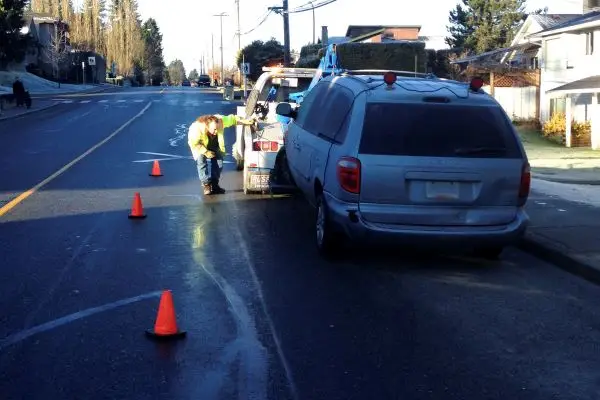A new online training will be available to towing and recovery industry in B.C. in early 2022.
The ARA is pleased to announce Emergency Response Traffic Control Training for towing and recovery operators. On December 1, 2021, WorkSafeBC (WSBC) will be announcing important changes to Part 18: Traffic Control of the WSBC Regulations. The introduction of these new regulations follows a period of industry consultation and brings the regulations in line with the new Traffic Control Manual published earlier this year by the Ministry of Transportation and Infrastructure. The new regulations create a new classification for towing and recovery operators where towers are now classified as “emergency responders” when present at an emergency scene at a work zone where traffic control is required.
In addition to classifying towing and recovery as emergency response, the regulations require that any operator assigned to set up a traffic control zone must have received training in the following:
- Basic traffic control principles;
- Instruction on the use, set up, and takedown of temporary traffic control devices;
- Traffic management principles described in the Traffic Management Manual;
- Use of a buffer vehicle to protect the work zone during an emergency; and,
- Safe work procedures and appropriate selection, use and maintenance of personal protective clothing, and safety equipment.
Up until now, there has been no traffic control training available that addresses the unique situations towing and recovery operators must contend with. At best, most training has been an adaptation of previous training designed for the construction industry, which can often make things more confusing for the operator. The ARA’s emergency response training applies traffic management principles to day-to-day operations that operators will encounter and gives them the practical skills they need to safely set up a work zone and manage the scene.
The ARA is grateful to WSBC for their financial assistance in helping the ARA design this course. The goal was to design a course that could be accessible, affordable, and practical, and one that will be recognized as meeting the requirements set forth in the new regulations.
Designing any sort of training program for the towing industry can be difficult for several reasons. B.C. is a large province, so it is not possible to offer in-person courses everywhere in the province. Conversely, it would be cost-prohibitive for companies to send their employees to the Lower Mainland for training. Even if you could manage to have in-person training, with staff turnover rates as high as they are these days, it would be impracticable to host classes at a consistent enough frequency to ensure your employees—especially new employees—receive the training they need to safely do their jobs.
The solution was to design an online training program that could be accessed any time of year and would be affordable and still address everything that needed to be covered. Online training has come a long way in recent years and modern technology allows students to become fully engaged in the lessons.
The course will be broken down into several modules with a final exam at the end. However, the training does not end there; it will be the responsibility of the employer to conduct a practical assessment after the operator has completed the online portion of the training to gauge their ability to apply what they have learned to real-life situations.
The course is ideal for all new operators, or even for those that have been in the industry a while. There is always something new to learn. Watch your email and ARA social media channels for course registration information.
